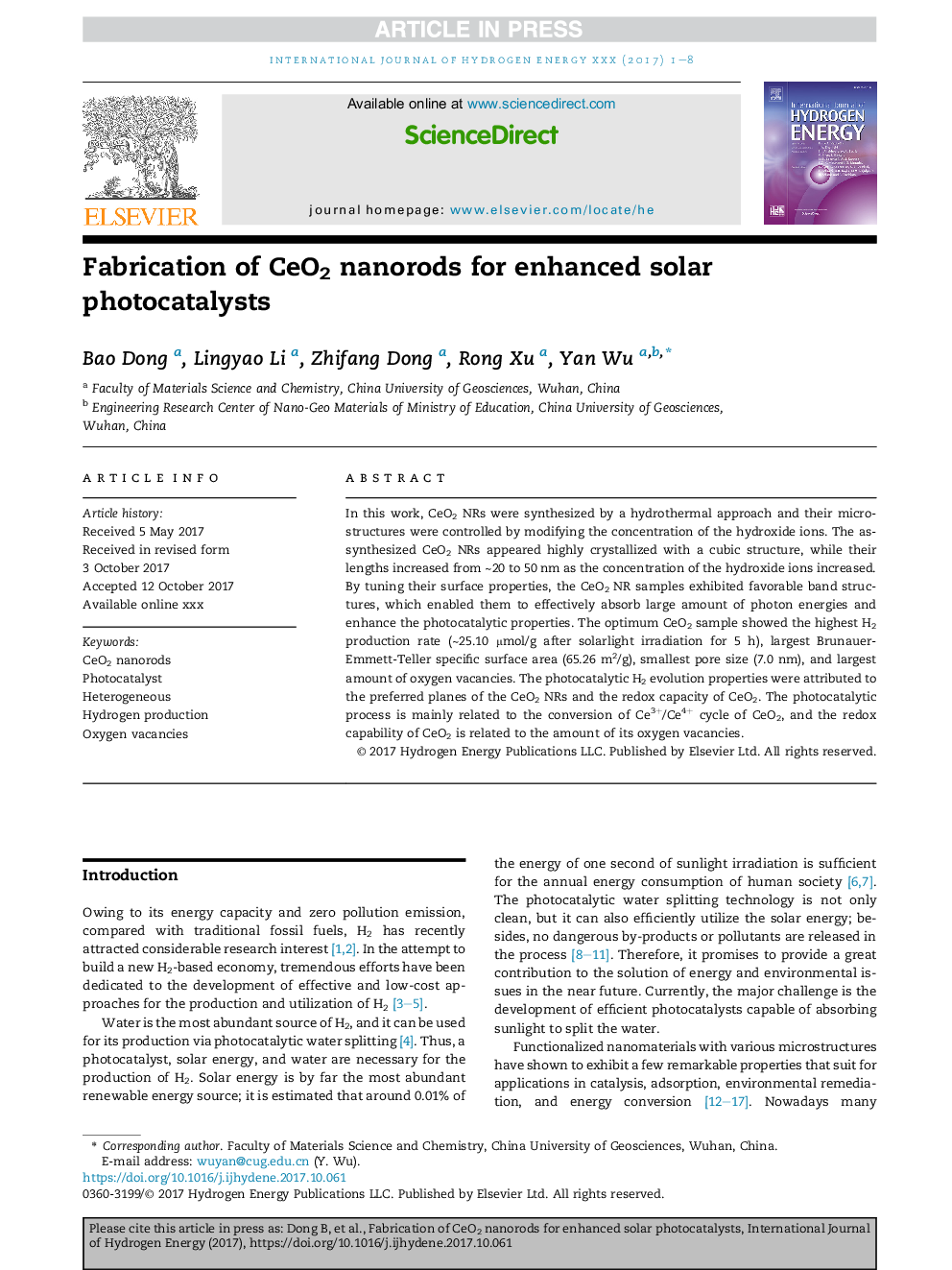| Article ID | Journal | Published Year | Pages | File Type |
|---|---|---|---|---|
| 7707400 | International Journal of Hydrogen Energy | 2018 | 8 Pages |
Abstract
In this work, CeO2 NRs were synthesized by a hydrothermal approach and their microstructures were controlled by modifying the concentration of the hydroxide ions. The as-synthesized CeO2 NRs appeared highly crystallized with a cubic structure, while their lengths increased from â¼20 to 50 nm as the concentration of the hydroxide ions increased. By tuning their surface properties, the CeO2 NR samples exhibited favorable band structures, which enabled them to effectively absorb large amount of photon energies and enhance the photocatalytic properties. The optimum CeO2 sample showed the highest H2 production rate (â¼25.10 μmol/g after solarlight irradiation for 5 h), largest Brunauer-Emmett-Teller specific surface area (65.26 m2/g), smallest pore size (7.0 nm), and largest amount of oxygen vacancies. The photocatalytic H2 evolution properties were attributed to the preferred planes of the CeO2 NRs and the redox capacity of CeO2. The photocatalytic process is mainly related to the conversion of Ce3+/Ce4+ cycle of CeO2, and the redox capability of CeO2 is related to the amount of its oxygen vacancies.
Related Topics
Physical Sciences and Engineering
Chemistry
Electrochemistry
Authors
Bao Dong, Lingyao Li, Zhifang Dong, Rong Xu, Yan Wu,
